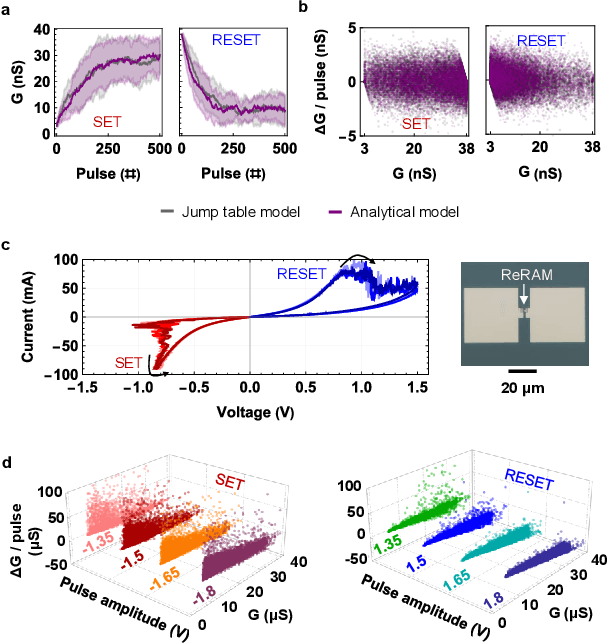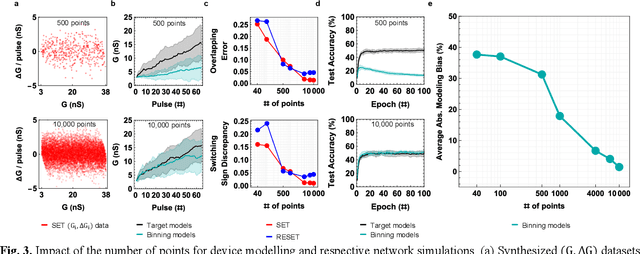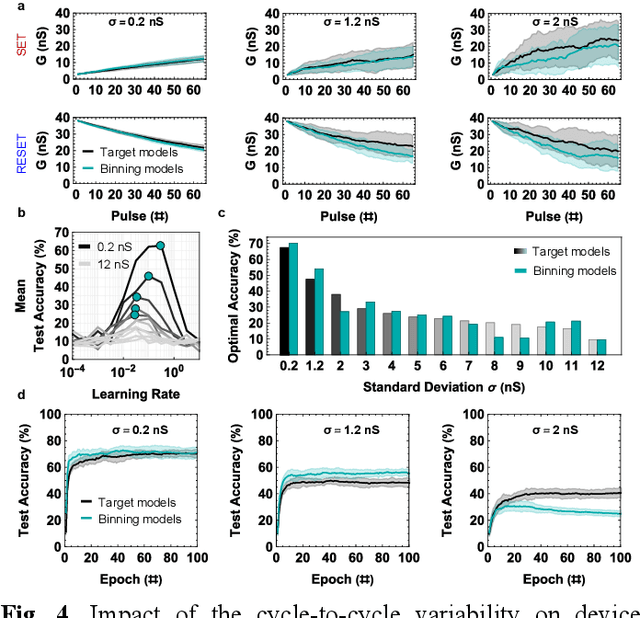Osama Yousuf
Layer Ensemble Averaging for Improving Memristor-Based Artificial Neural Network Performance
Apr 24, 2024Abstract:Artificial neural networks have advanced due to scaling dimensions, but conventional computing faces inefficiency due to the von Neumann bottleneck. In-memory computation architectures, like memristors, offer promise but face challenges due to hardware non-idealities. This work proposes and experimentally demonstrates layer ensemble averaging, a technique to map pre-trained neural network solutions from software to defective hardware crossbars of emerging memory devices and reliably attain near-software performance on inference. The approach is investigated using a custom 20,000-device hardware prototyping platform on a continual learning problem where a network must learn new tasks without catastrophically forgetting previously learned information. Results demonstrate that by trading off the number of devices required for layer mapping, layer ensemble averaging can reliably boost defective memristive network performance up to the software baseline. For the investigated problem, the average multi-task classification accuracy improves from 61 % to 72 % (< 1 % of software baseline) using the proposed approach.
Device Modeling Bias in ReRAM-based Neural Network Simulations
Nov 29, 2022



Abstract:Data-driven modeling approaches such as jump tables are promising techniques to model populations of resistive random-access memory (ReRAM) or other emerging memory devices for hardware neural network simulations. As these tables rely on data interpolation, this work explores the open questions about their fidelity in relation to the stochastic device behavior they model. We study how various jump table device models impact the attained network performance estimates, a concept we define as modeling bias. Two methods of jump table device modeling, binning and Optuna-optimized binning, are explored using synthetic data with known distributions for benchmarking purposes, as well as experimental data obtained from TiOx ReRAM devices. Results on a multi-layer perceptron trained on MNIST show that device models based on binning can behave unpredictably particularly at low number of points in the device dataset, sometimes over-promising, sometimes under-promising target network accuracy. This paper also proposes device level metrics that indicate similar trends with the modeling bias metric at the network level. The proposed approach opens the possibility for future investigations into statistical device models with better performance, as well as experimentally verified modeling bias in different in-memory computing and neural network architectures.
 Add to Chrome
Add to Chrome Add to Firefox
Add to Firefox Add to Edge
Add to Edge